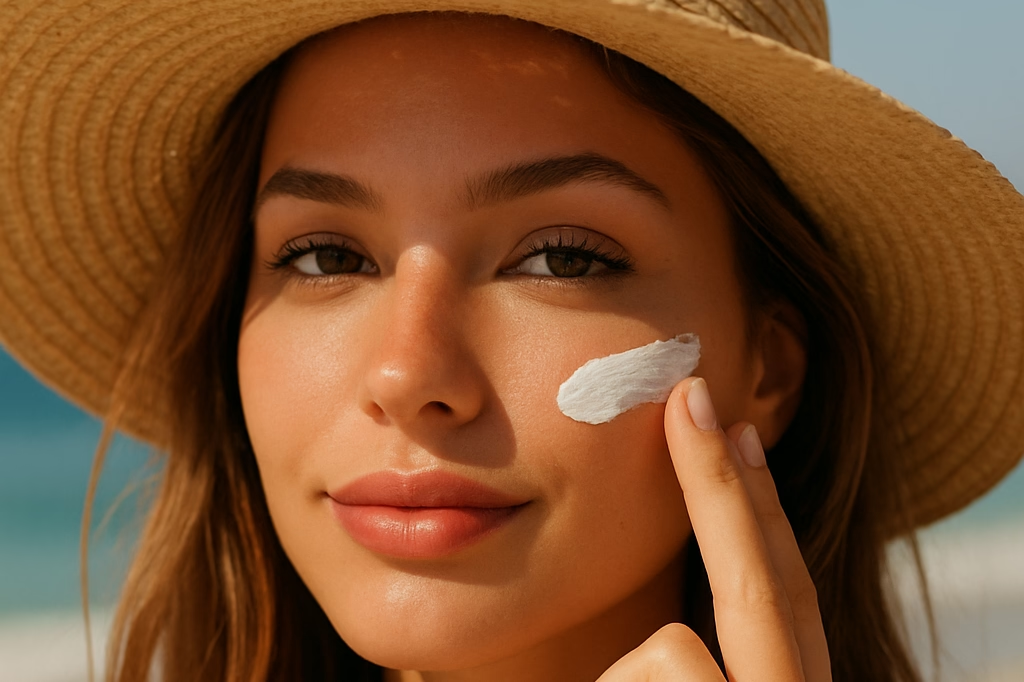By Kendall Farr, Licensed Esthetician, SPADA Skincare
Estheticians are always interested in how and when you apply SPF each day to protect your skin. Here’s why: your home care may be consistent and include a supportive combination of the right cleanser for your skin type, active ingredients like vitamin C for antioxidant protection, and hydration from a moisturizer, but if you are not protecting your skin against the damaging and aging effects of the sun – then it all adds up to not much.
The best way (okay, the only way) to effectively manage the visible signs of aging like fine lines, deeper lines, and dark spots is to wear sunscreen. Every day. But there are a lot of options available and it can be challenging to find what feels good, looks good, and also offers enough protection. There are two primary categories of sunscreen to choose from: mineral and chemical. We recommend mineral sunscreen for daily protection for a variety of reasons.
First, What Does SPF Mean?
Your skin needs to be shielded from two types of sunrays – UVB and UVA. Easy to remember: UVA ages. UVB burns. Sun protection factor (or SPF) is a measure of how well a sunscreen protects against sunburn, which usually results from exposure to ultraviolet B (or UVB) rays, the type that cause most skin cancers. Dermatologists recommend an SPF of at least 30 for most people and most climates.
Dermatologists recommend using a sunscreen with both UVA and UVB protection (known as Broad Spectrum). The SPF number on the bottle refers to how much UVB it allows in, not how much it blocks. A sunscreen with SPF 15 allows one-fifteenth of the sun’s rays to reach your skin, or about 7%. So, it filters out about 93% percent of UVB rays while an SPF 30 filters about 97%:
- UVB rays cause skin redness, sunburn, and most non-melanoma skin cancer.
- UVA rays – the ultraviolet radiation that cause skin aging – are responsible for premature aging, wrinkles, irreversible DNA damage and malignant melanoma skin cancer.
This is important: sunscreens are not meant to increase the amount of time you can spend in the sun without burning. They provide protection while you are exposed to the sun’s UV rays so reapplication about every 2 hours is smart.
Mineral Sunscreen vs Chemical Sunscreen – What’s the Difference?
Mineral sunscreens are a blend of zinc oxide and titanium dioxide to physically block and reflect UV rays from the skin’s surface. Chemical sunscreens use active ingredients such as avobenzone and oxybenzone that are absorbed into the skin to dissipate UV rays as heat. Mineral sunscreens protect the skin on contact while chemical sunscreens become effective within 20–30 minutes of application and absorption of the chemical agents into the bloodstream.
An important distinction between mineral and chemical options stems from the FDA’s concern about the potential hormone disruption caused by the ingredients avobenzone and oxybenzone (in particular) commonly found in chemical formulations. The FDA has a label for substances that it rates sufficiently safe for human use: GRASE. That’s an acronym for “generally recognized as safe and effective.” The FDA found that many of the active ingredients in chemical sunscreens – the same ingredients that filter out harmful ultraviolet rays – were also absorbed into the body at levels elevated beyond the FDA’s threshold of concern. More concerning, some of these ingredients remain in your system (and above the FDA’s concern level) for up to three weeks after application on the skin.
How to Choose Mineral Sunscreen Like A Pro
A common complaint about mineral sunscreens – while having the highest safety profile – is that they can look chalky on the skin. The trick is to find a mineral option that absorbs easily, that’s lightweight enough to wear with makeup, and that doesn’t leave a white cast. The newest and best mineral formulations avoid this thanks to sophisticated chemistry and a ‘cosmetic elegance’ as found in G.M. Collin’s SPF 45 Tinted Sunscreen. It boasts a universal tint that adjusts to your skin’s tone paired with an ultra-light, gliding texture. An instant glow maker, it works solo or as a primer under makeup. It’s formulated responsibly with 100 percent mineral filters. Enriched with super antioxidants vitamin E and lycopene, this formula provides powerful protection from aging free radicals. And it’s blended with carnauba and rice bran waxes that act as natural SPF boosters that scatter UV light.
While dermatologists may recommend that the best sunscreen is the one you’ll actually wear, we’ll go a step further by encouraging you to wear a screen that is mineral, clean, and with an SPF of 30 or more for maximum protection. When it comes to managing the effects of aging on the skin – remember to wear your sunscreen – every day and everywhere.

